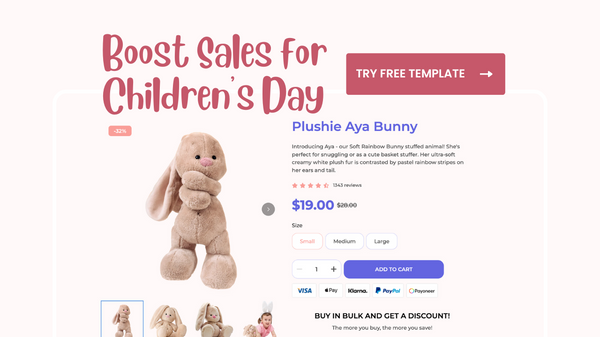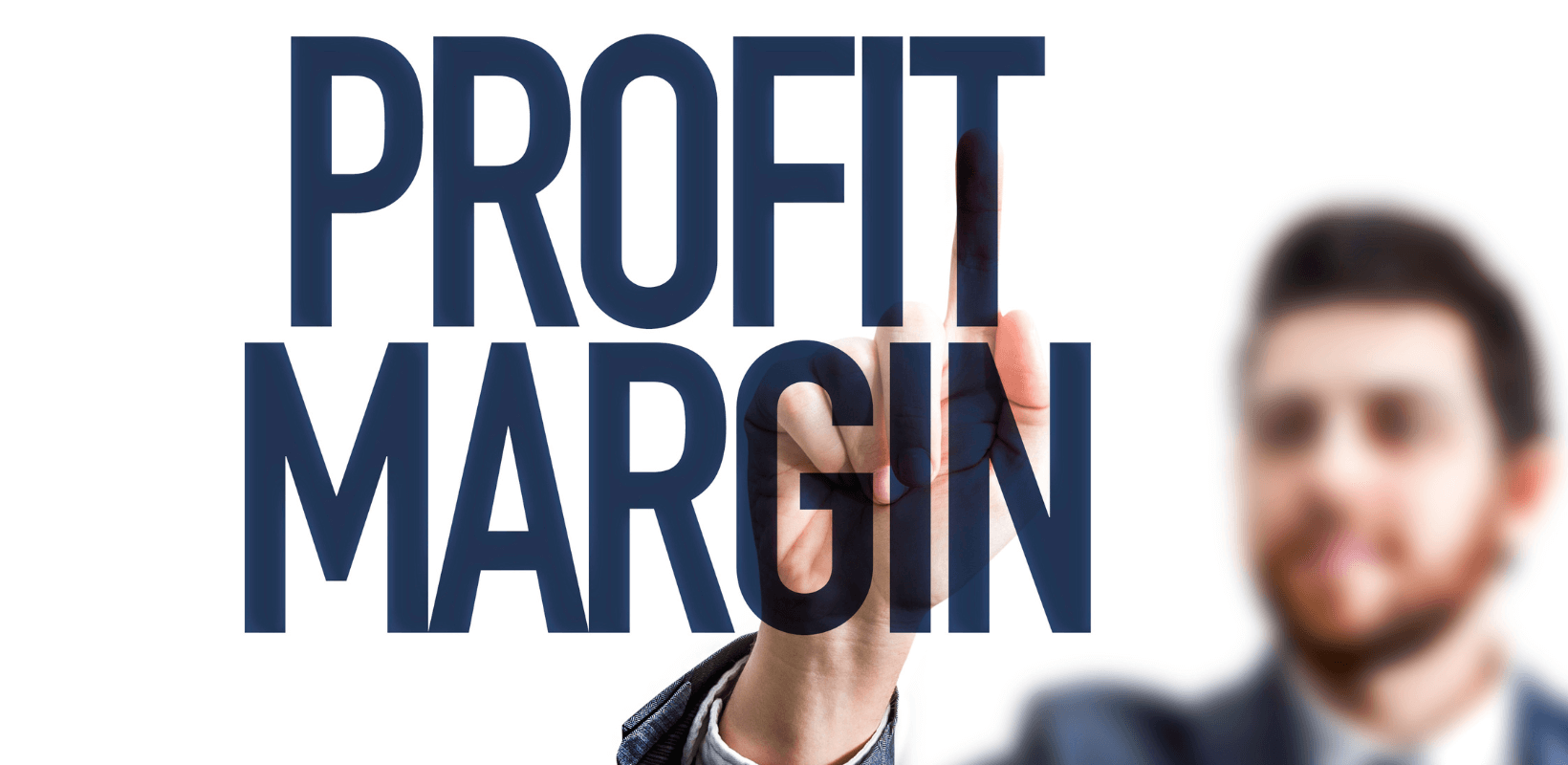Product pricing is an important factor in determining the success of your online business, but many eCommerce entrepreneurs and businesses treat selling prices as afterthoughts. They accept the first price that comes to mind, imitate competitors, or (worse) guess.
Humans are irrational creatures. Product pricing strategy is an art form as well as a science.
It also has an impact on your customers. One of the most important factors in selling price decisions is price sensitivity. Customers are now well-informed about their purchases, and they are price sensitive because they want the best value for their money and time.
That's why, when launching a new business or product, it's all too easy to get stuck on pricing strategy, but it's critical not to let the decision prevent you from proceeding. The best selling price data entrepreneurs can obtain comes from launching and testing with real customers—but you must start somewhere, with a price that works.
There are numerous resources on the art of opting selling price available, but this step-by-step guide will provide you with the tools and strategies you need to develop a reliable, data-backed selling price structure for your product.
But first, consider scientific approaches and strategies. Follow these steps to answer the question: How To Price A Product for your business niche?
How To Price A Product Formula
Step 1: Find a base price by getting to know common pricing strategies in your industry
Thousands of entrepreneurs and decades of learning have paved the way for new businesses to develop a pricing strategy that takes advantage of the most cutting-edge pricing options available.
Knowing which pricing models work best in your industry can simplify product pricing and give you confidence that you're not just guessing.
HOW TO COST A PRODUCT WITH AN EXAMPLE
Cost-plus pricing is one of the most basic methods of pricing your product.
Cost-based pricing entails calculating the total costs of production and then adding a percentage markup to determine the final price.
For example, let’s say you’ve designed a product with the following costs:
- Material costs = $20
- Labor costs = $10
- Overhead = $8
- Total Costs = $38
You then multiply the total costs by your markup percentage, say 50% (retail industry standard), to get a final product price of $57.00 ($38 x 1.50). If you recall our "Charm Pricing" strategy from the beginning, you could price this item at $57.99.
This method is straightforward, and quick, and allows you to quickly add a profit margin to any product you intend to sell.
MARKET-ORIENTED PRICING
Market-oriented pricing, also known as a competition-based pricing strategy, compares similar products in the market.
Depending on how well their own product matches up, the seller sets the price higher or lower than their competitors.
- Price above market: Consciously pricing your product above the competition to brand yourself as having a higher-quality or better-performing item
- Copy market: Selling your item at the same price as your competition to maximize profit while staying competitive
- Price below market: Using data as a benchmark and consciously pricing a product below competitors, to lure customers into your store over theirs
Each of the above strategies in the market-oriented model has advantages and disadvantages. To accurately price your product with market-oriented pricing, you must understand the costs of production as well as the quality compared to competitors.
DYNAMIC PRICING
Dynamic pricing, also known as demand pricing or time-based pricing, is a business strategy that involves setting flexible prices for a product or service based on current market demand.
Dynamic pricing, in other words, is the act of changing a price multiple times throughout the day, week, or month to better match consumer purchasing habits.
Here's how eCommerce businesses might appear in action:
Not only do services such as Uber use dynamic pricing to maximize profits. Amazon has long used price increases on their most competitive items to coincide with major eCommerce shopping days such as Black Friday and Cyber Monday.
Prices on Amazon change so frequently that the price-tracking website checks prices for popular items several times per day.
There are numerous great software products available that will assist you in automatically applying dynamic selling price formular to your products without breaking the bank or pulling your hair out.
- Tool #1: Quicklizard
- Tool #2: Omnia Retail
- Tool #3: Profit Peak by Splitly (Amazon-Specific)
These tools enable you to set specific pricing guidelines by focusing on specific margins, allowing your eCommerce business to remain profitable.
If you run a commodity or service business, you can charge based on usage. Usage-based billing is popular among utility providers and is gaining traction in the SaaS space.
Step 2: Capture More Market Share By Experimenting With Selling Price And Understanding Price Elasticity
Many businesses believe that by lowering product selling price, more people will buy the product and their revenue will increase.
Lowering product cost price strategically has advantages and can lead to increased revenue. For one thing, it reduces the amount of money left on the table for customers willing to buy at different price points.
Simply put, Consumer Surplus is the difference between what a consumer pays and what he is willing to pay.
So, how do you maximize profits while increasing market share?
You must understand a product's sales volume at various price points, as well as what allows you to remain profitable. In other words, you must comprehend price elasticity.
For a moment, imagine you have 100 customers who buy your tumbler. After you test selling price, you find customers convert at different rates depending on the price of the product. You also find that sales volume fluctuates with a price.
You can now easily calculate how much revenue is generated by each price point using this small amount of data. In theory, this is a great way to increase the "base" product price you calculated in step one.
But there’s one small problem…
What about the 65 customers who would have bought if the price was $5 or $10?
That's $450 in revenue you're passing up. Nobody in their right mind wants to do that, which is why you need a strategy to unlock that untapped gold mine.
Discount pricing, loss-leader pricing, and anchor pricing are my three favorites for profitably lowering prices.
DISCOUNT PRICING

Discount pricing is a strategy in which items are artificially marked up or begin at a higher price, but are then offered for sale at what appears to be a lower cost to the consumer.
To attract new customers and boost sales, an online retail store, such as Macy's shown above, may offer discounted selling price on all of its kitchen items for a limited time.
This is a simple way to attract new customers who would not have purchased a specific item at a higher price.
Attract customers with discounts, keep your profit margin on discounted items close to zero, and then profitably upsell or cross-sell other items in your store.
That is, unless you want to give loss-leader pricing a shot...
LOSS-LEADER PRICING
Loss-leader pricing, like discount pricing, takes a slightly riskier approach to attracting customers.
Patagonia is a prime example of effective loss-leader selling price strategy. They begin with a "Web Specials" page, which they promote through email and social media:

Many of their Web Special products are sold at 25-75% off the normal retail price:

The key distinction between loss-leader pricing and standard discount pricing is that businesses frequently know they will not make a profit on loss-leader items. That begins with a thorough understanding of your product costs and profit margins.
Step 3: Make Sure Your Product Pricing Drives Long Term Business Profit
ANALYZING YOUR CURRENT METRICS
The pricing strategies discussed above provide excellent guidance on how to price a product.
However, the pricing strategies you employ must generate enough income to cover your overhead expenses while also leaving you with a small profit to fuel future growth.
Overhead expenses that you should consider include:
- Rent
- Manufacturing costs
- Facilities costs
- Utilities
- Staff salary and related costs
- Marketing costs
- Professional fees, licenses, or permits
- Packaging costs
- Shipping supply costs
- Website maintenance costs
- Personal income
- Taxes
EXPERIMENT WITH Selling PRIce strategy
Prices that fluctuate and move in tandem with the market will help to boost revenue while decreasing consumer surplus.
Here are three great ways you can experiment with your pricing:
1. Raise Your Prices On Best-sellers
Experiment with raising the price of one or more of your products if they are selling well. This will increase your gross revenue and allow you to compensate for any other products that aren't performing well.
Experiment with pairing higher prices with free shipping to offset the potential negative effects of raising your prices. This will make your customers happy while also increasing your profits.
2. Take Advantage Of Seasonal Discounts Or Promotions
Seasonal sales and promotions are an excellent way to increase traffic to your website or physical store.

3. Model, Don’t Copy Your Competitors
Looking to the market, as with any great business or pricing strategy, is a great way to stay on top of current pricing trends.
Everything from stock market fluctuations to employment rates to new laws and trends can have an impact on the price people are willing to pay for your product.
Use profit margin formula to calculate selling price
Use a product selling price calculator to find a profitable average selling price range for your products to make your life easier. Using PageFly tool to calculate profit margin is an excellent idea for price determining. It employs a cost-plus pricing strategy, which calculates the final selling price by adding a percentage markup to the total costs of manufacturing your product.
This simple calculator will assist you in determining selling prices for your products so that you can save money and increase profits.
To make every penny count, use PageFly's Profit Margin Calculator to determine the price of your product.
PageFly's simple profit margin calculator can assist you in determining a profitable selling price for your product.

To begin, choose your industry and pick the currency. Next, enter your gross cost for each item and the percentage profit you want to make on each sale. When you click "calculate," the tool will run those figures through its profit margin formula to determine the final price you should charge your customers.

From there, you can effectively price your products and start profiting from each sale.
What is Profit Margin ?
Profit margin is a measure of a company's profitability. Profit margins can be calculated for any product or service that can be sold.
It is critical to track and calculate profit margin to ensure that your company generates enough revenue to reinvest in itself.
Profits can be used to expand your business by investing in marketing, advertising, additional resources, important software, and so on.
How to price a handmade product?
First, we need to calculate profit margin. Profit margin is figured by dividing your net profit by your revenue. In layman's terms, this is accomplished by having your net profit divided by your net sales. For example, if you sell 15 handmade products for $400 in net revenue but the cost to source and market your handmade product, plus business costs, equals $350, your profit margin is (400-350)/400. This implies that your profit margin is 12.5%.
Profit Margin = Gross Profit (Total Sales – Total Expenses) / Total Sales
Once you've determined your profit margin, you can examine the profitability of your online business to determine how much markup to include on your handmade product. Over time, increasing your handmade product markup will increase your profit margin. To calculate handmade product markup, divide the cost of production by the product's gross profit. In the previous example, the markup would be 14.29%, or (50/350)*100.
How to price a product calculation?
- Cost - The total cost of producing or sourcing a product. This includes labor costs, material costs, and variable costs. It is critical to understand this cost so that you can plan your profit accordingly.
- Margin - When price a product, the margin cost is the percentage increase applied to the cost to make a profit on a sale. This margin is important to know during the pricing stage of a product so that it can be adjusted as needed.
- Revenue - Profit added to the cost of the product equals revenue, which is the total amount received by a customer for a product. It is critical to know how much money you have received in order to assess the success of a product.
- Profit - is your revenue less your costs. Profit must be known in order to benchmark success on a consistent basis. Profit should increase consistently to ensure business growth.
What is a Good Profit Margin?
Profit margins vary according to industry, but a good average is 10%. Due to the high level of competition in the clothing industry, this percentage can be as low as 2%. Software as a service (SaaS) and financial services are two other industries with higher profit margins.
Knowing your profit margin is critical because it allows you to grow your business by alerting you to overspending or underperforming products. If your profit margin is lower than the industry average, you should reevaluate your expenses and see where you can cut costs. This could include switching to a less expensive supplier, spending less on marketing, or optimizing advertising to get more bang for your buck.
A good profit margin allows you to invest in potential new products that will help you expand your brand and catalog into new markets.
Why is a Profit Margin Important in Commerce?
Profit margin is a fantastic metric to have in your business. It can help you plan your spending and identify when it is time to re-evaluate your suppliers. Profit margin, on the other hand, can ensure your success as a dropshipper by informing your selling strategy, and marketing budget, and benchmarking your business against your competitors.
It is important to note that increased revenue does not imply increased profit margins. If you spend too much money on marketing or price your products incorrectly, you may end up losing money.
If this is the case for you, you can try new suppliers, reduce marketing spending on inefficient platforms, unsubscribe from software you don't use often but pay for, and generate more revenue through innovative free channels such as SEO.
Why this pricing model works
The most important aspect of your price is that it must be sufficient to sustain your business. If you set a high price for your products and potential customers do not buy, you will lose market share. Setting a low price means you'll be selling at a loss or with an unsustainable profit margin. This will make growth and scaling difficult.
Other important factors to consider when pricing include how you compare to your competitors, consumer trends, and what different pricing strategies mean for your business and your customers' expectations.
But, before you do anything else, you must first ensure that you have established a sustainable base price.
Get to know how Grand Videoke North America, an electronic product retailer, is using PageFly to bring in more traffic and sales on their web store for the Canadian and US markets.

Test and iterate once you’re live
Don't let the fear of selecting the "wrong" price prevent you from opening your store. Pricing decisions will always evolve with your business, and as long as your price covers your expenses and generates a profit, you can test and adjust as needed. Conduct a price comparison to see how your strategies compare to similar products.
Taking this approach will result in a price you can be confident in because the most important aspect of price planning is that it helps you build a sustainable business. Once you have that, you can launch your store or new product, offer lower prices on discounts, and use customer feedback and data to adjust your selling structure in the future.
If you are a do-er 🏃
- Already have a Shopify store? Try PageFly to maximize your store's revenue.
- Don't have it yet? Open Shopify Store with 14 Day Free trial.
FAQ
- What is a good profit margin?
A good profit margin is determined by the industry in which your company operates. This is due to the fact that the costs and materials required for your products and services will vary by industry. Profit margin is also affected by your company's location due to rental and payroll costs.
When it comes to determining the profitability of a specific item, a gross profit margin is sufficient. Nonetheless, net profit margins are a more accurate indicator of overall profitability. A net profit margin of 10% is considered average, a margin of 20% is considered high (or "good"), and a margin of 5% is considered low. A good profit margin is one with a net profit margin of 5-10%.
- How does this Profit Margin Calculator work?
Use PageFly's simple Profit Margin Calculator to help you calculate selling price that will result in a healthy profit margin. To begin, enter the gross cost of each product you are selling as well as the desired percentage profit on the item.
Then, click "calculate." To save you time, PageFly's Profit Margin Calculator will use a profit margin formula to calculate the final price you should charge your customers. The final figure indicates the price you should charge your customers in order to achieve that profit margin.
- How to calculate gross profit margin?
The formula for calculating gross profit margin is as follows:
Gross Profit Margin = Gross Profit / Revenue multiplied by 100
Consider the following example to see how this works:
FYR Company is an e-commerce store that sells personalized gifts. They made $700,000 from selling personalized mugs in 2020. The cost of goods sold is $200,000 (the direct cost of producing the shirts).
All other operating expenses total $400,000.
Let us now compute the gross and net profit margins for FYR Company in 2020.
Income Statement:
- Revenue: $700,000
- Cost of Goods Sold: ($200,000)
- Gross Profit: $500,000
- Other Expenses: ($400,000)
- Net Income: $100,000
The following are the answers based on the above income statement figures:
FRY's gross margin is calculated by dividing $500,000 in gross profit by $700,000 in revenue, which equals 71.4%.
Net margin is calculated by dividing $100k in net income by $700k in revenue, which equals 14.3%.
- What is the difference between gross and net profit margin?
The gross profit margin measures how much profit a single product brings to your company, whereas the net profit margin measures your company's overall profitability. Let's look at how to calculate gross profit margin. For example, if you sell a tumbler for $50 and make it for $35, your gross profit margin is 30% ($15 divided by $50).
While this metric is useful, it should not be used to assess your company's profitability. Let's now look at how to calculate the net profit margin. Net profit margin is calculated by taking total sales, subtracting business expenses, and dividing the result by total revenue.
- What is the difference between gross margin and markup?
Both gross profit margin and markup are accounting terms that use the same inputs—both use revenue and costs in their calculations. Both of these metrics examine the same transaction but provide different information.
So, what's the distinction between these two measurements? Profit margin is defined as sales minus cost of goods sold, whereas markup is the amount by which the cost of goods is increased to obtain the final selling price or price that you set for your customers. These two terms will assist you in understanding how to set appropriate original price. You want to set the correct pricing so that your company does not lose sales and thus profits.
- Is PageFly's Profit Margin Calculator Free?
- What is a high profit margin business?
App development firms, accountants, financial planners, real estate agencies, and marketing consultancies are examples of small businesses with high profit margins. This is due to the low overheads that these businesses may have, or the advanced specialization that the job necessitates. These are just a few examples of small businesses with high profit margins.







![How To Sell Customizable Products with PageFly & Zakeke [Tutorial]](http://pagefly.io/cdn/shop/articles/sell-customizable-products.jpg?v=1613966169&width=1640)




